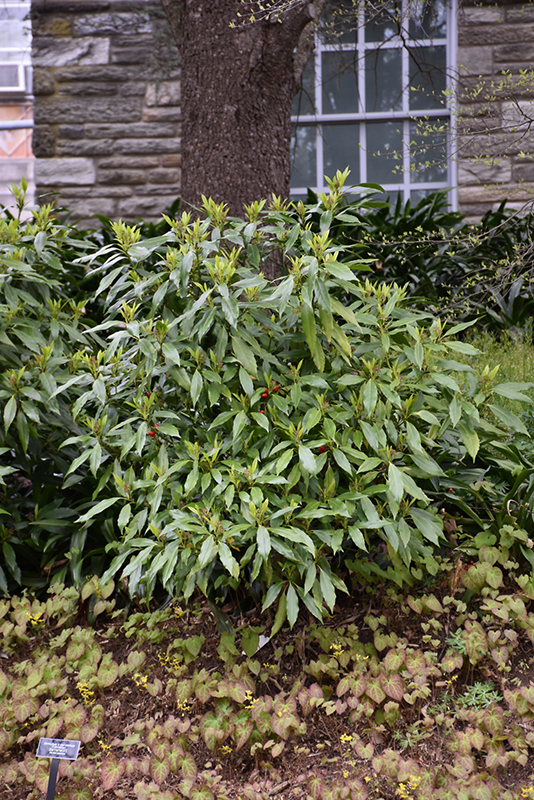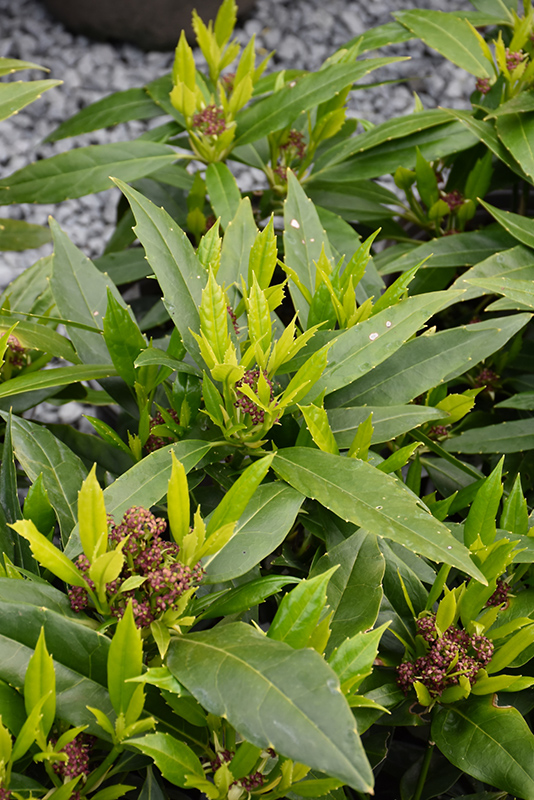Sawtoothed Japanese Aucuba
Aucuba japonica 'Serratifolia'
Height: 7 feet
Spread: 7 feet
Sunlight:
![]()
![]()
Hardiness Zone: 5b
Description:
An attractive evergreen shrub that is right at home in the shadiest garden area; it has a distinctively longer leaf with a coarse tooth like edge; ideal as a dense screen or informal hedge; drought tolerant once established; protect from cold winter winds
Ornamental Features
Sawtoothed Japanese Aucuba is primarily grown for its highly ornamental fruit. It features an abundance of magnificent red berries from mid fall to late winter. It has attractive dark green evergreen foliage. The large serrated pointy leaves are highly ornamental and remain dark green throughout the winter.
Landscape Attributes
Sawtoothed Japanese Aucuba is a dense multi-stemmed evergreen shrub with a more or less rounded form. Its average texture blends into the landscape, but can be balanced by one or two finer or coarser trees or shrubs for an effective composition.
This is a relatively low maintenance shrub, and can be pruned at anytime. It has no significant negative characteristics.
Sawtoothed Japanese Aucuba is recommended for the following landscape applications;
- Accent
- Mass Planting
- Hedges/Screening
- General Garden Use
Planting & Growing
Sawtoothed Japanese Aucuba will grow to be about 7 feet tall at maturity, with a spread of 7 feet. It has a low canopy, and is suitable for planting under power lines. It grows at a fast rate, and under ideal conditions can be expected to live for approximately 20 years.
This shrub does best in a location that gets morning sunlight but is shaded from the hot afternoon sun, although it will also grow in full shade. Keep it away from hot, dry locations that receive direct afternoon sun or which get reflected sunlight, such as against the south side of a white wall. It does best in average to evenly moist conditions, but will not tolerate standing water. It may require supplemental watering during periods of drought or extended heat. It is not particular as to soil pH, but grows best in rich soils. It is somewhat tolerant of urban pollution, and will benefit from being planted in a relatively sheltered location. Consider applying a thick mulch around the root zone in winter to protect it in exposed locations or colder microclimates. This is a selected variety of a species not originally from North America.
Disclaimer - This Plant Finder tool is an online resource representing many of the varieties that we carry over the course of the season, and is intended for informational purposes only. Inventory varies seasonally, so we cannot guarantee that every plant will be in stock at all times - please contact the store directly for current availability. It does not include our entire selection of plants, so be sure to visit our store to see varieties that may not be represented on this list.


